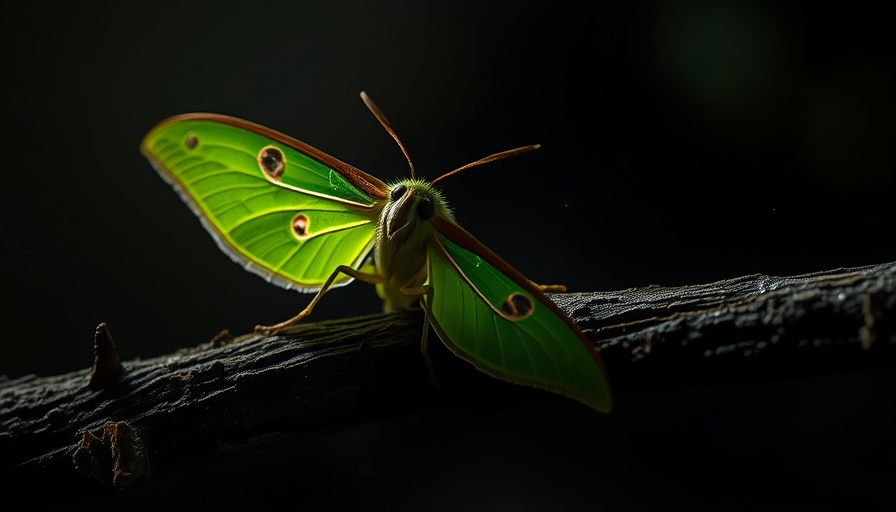
The Nighttime Pollinators: A Hidden Treasure in Ecosystems
When discussing pollinators, most people immediately think of bees and butterflies buzzing around flowers in the sunlight. However, a groundbreaking study from Lund University shines a spotlight on a different kind of pollinator – the nocturnal species – and reveals that they are just as crucial for plant reproduction as their daytime counterparts.
Understanding Nocturnal Pollination Success
This first-of-its-kind research review compiles data from 135 studies globally and examines 139 plant species. The surprising conclusion? In 90% of the examined cases, plants enjoyed similar reproductive success whether pollination occurred during the day or night. This realization opens up a wealth of possibilities for understanding plant-pollinator relationships.
Why Should We Care?
Nocturnal pollinators, including moths, bats, and night-active butterflies, play a vital role in maintaining healthy ecosystems. As they engage in pollination activities, they contribute to biodiversity and the survival of various plant species, many of which are essential to our food systems. Yet, these species receive less attention and less protection than their daytime peers.
Implications for Home Gardens and Ecosystems
For homebuyers and property investors interested in sustainable living, understanding the role of nocturnal pollinators is essential for cultivating productive gardens and landscapes. By planting night-blooming flowers that attract these incredible creatures, homeowners can not only ensure the success of their gardens but also contribute positively to the biodiversity in their areas.
Reinventing the Garden: Night-Blooming Plants
To support nocturnal pollinators, consider incorporating plants such as evening primrose, moonflower, and night-blooming jasmine into your home garden. These species thrive in low light and attract moths and other night-time visitors. Not only do they add beauty to nighttime landscapes, but they also become crucial resources for pollinators.
Practical Insights for Encouraging Pollination
Here are some actionable steps you can take to foster a nurturing environment for nocturnal pollinators:
- Grow Night Flowers: Plant florals that bloom at night to attract moths and other nocturnal species.
- Reduce Light Pollution: Keep exterior lighting to a minimum at night to provide a tranquil environment for these creatures.
- Create Habitats: Feature various layers in your garden that provide shelter and food sources for a diverse range of pollinators.
In Conclusion: The Call for Conservation
This profound revelation about nocturnal pollinators stresses the importance of recognizing all creatures contributing to plant reproduction and the environment. As homebuyers and property investors increasingly seek eco-friendly solutions, integrating nocturnal pollinator-friendly practices can support sustainable living. By understanding the profound role of nocturnal pollinators and enhancing the biodiversity of our gardens, we can take significant steps toward preserving our ecosystem for future generations.
Explore your local nursery for the plants that can help you make a meaningful difference!
 Add Row
Add Row  Add
Add 





 Add Row
Add Row  Add
Add 








Write A Comment